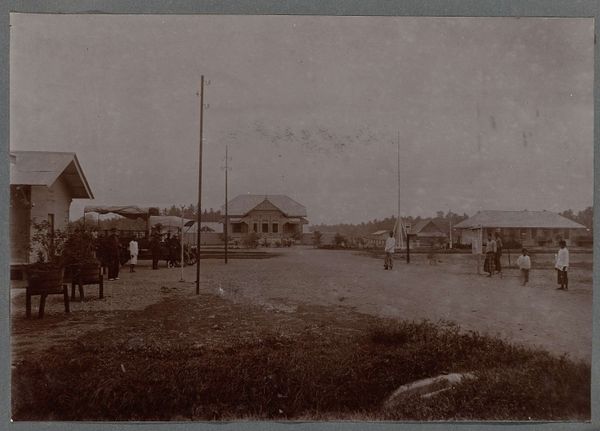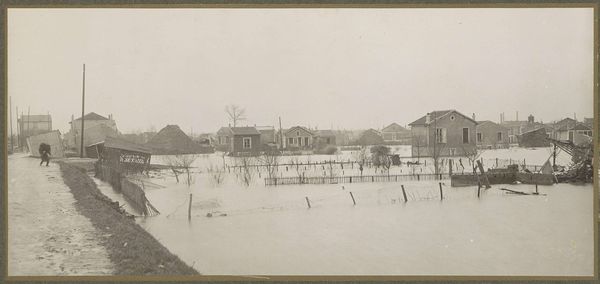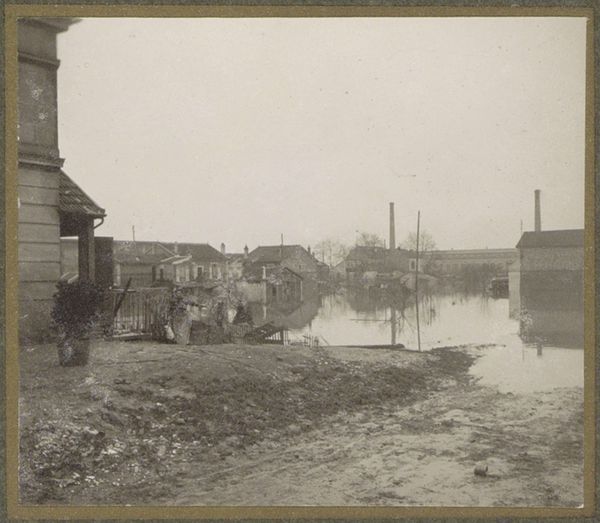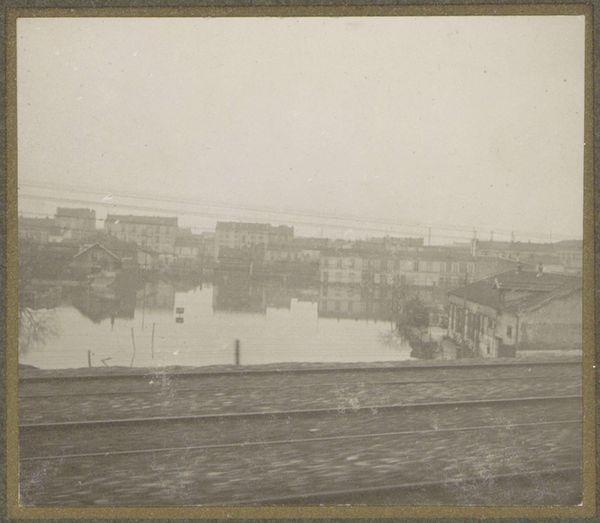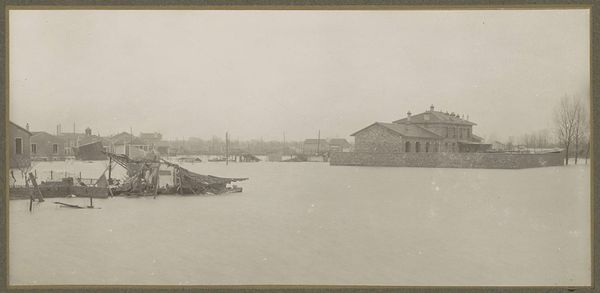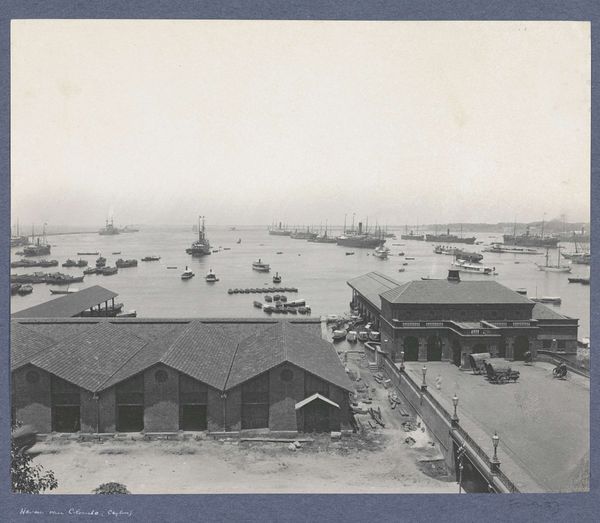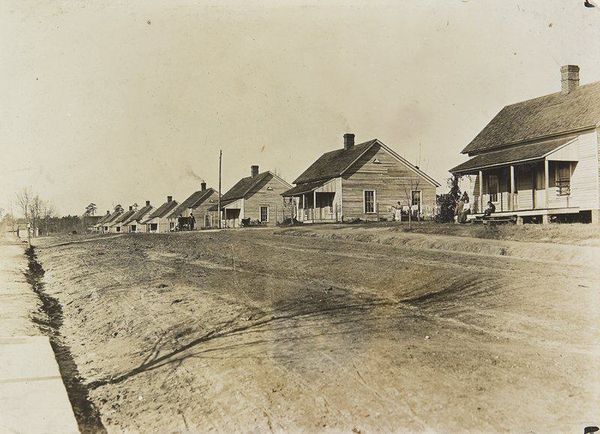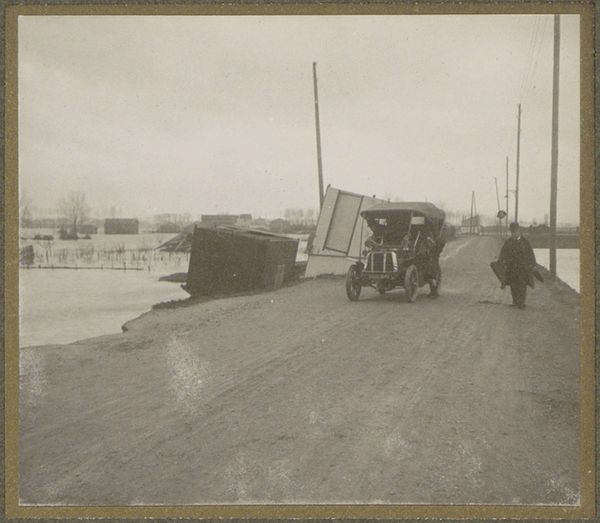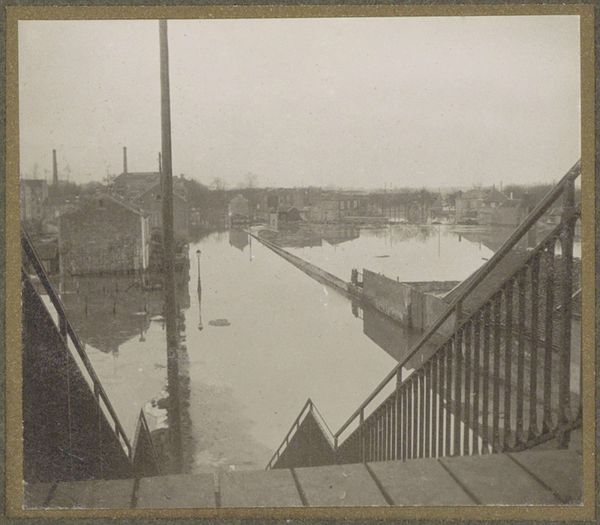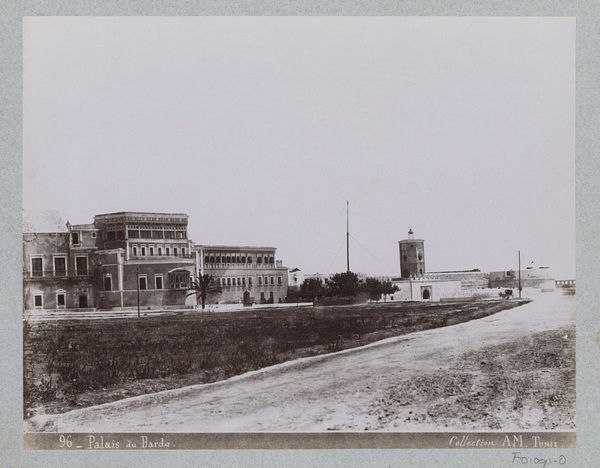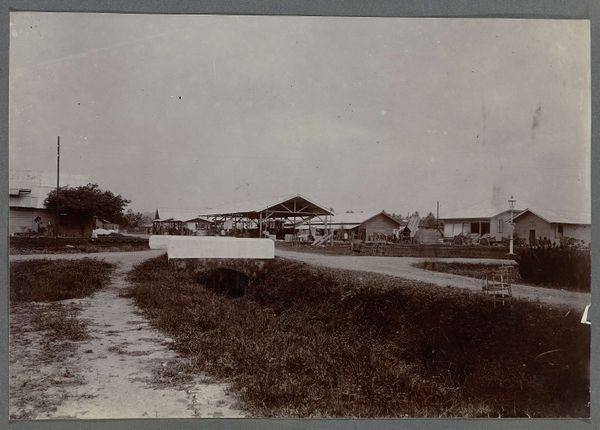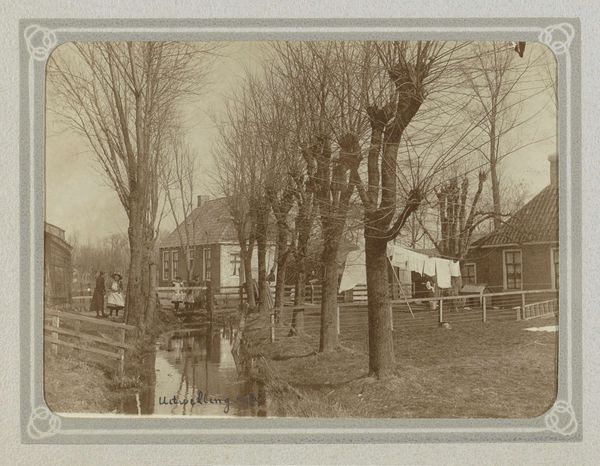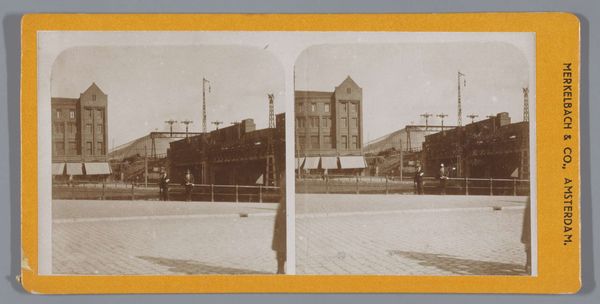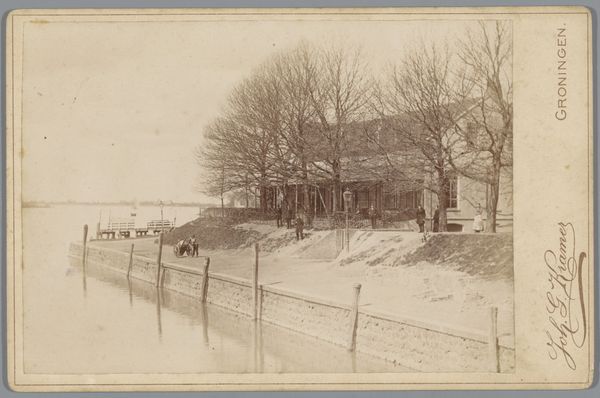
Panoramafoto van een auto en een fotograaf op een weg temidden van water in een buitenwijk van Parijs 1910 - 1911
0:00
0:00
photography
#
pictorialism
#
landscape
#
street-photography
#
photography
#
cityscape
Dimensions: height 100 mm, width 231 mm
Copyright: Rijks Museum: Open Domain
Editor: Here we have a photograph by G. Dangereux, "Panoramafoto van een auto en een fotograaf op een weg temidden van water in een buitenwijk van Parijs," taken between 1910 and 1911. It feels almost… oppressive with its heavy grays and horizontal composition. What strikes you most about its visual structure? Curator: The overwhelming horizontal expanse does indeed dictate the experience. The picture plane is dissected by the road and waterway, establishing parallel lines which guide the gaze. The verticals of the poles offer a counterpoint, albeit a regimented one. Note how the tonality further unifies the composition: the muted, almost monochromatic palette minimizes contrast and softens the edges. Do you observe how this contributes to the atmosphere? Editor: Yes, it almost dissolves the forms into one another. The details become less distinct. There seems to be an emphasis on texture instead—the grainy road, the slightly blurred reflections in the water. How do these choices affect the viewer's understanding? Curator: Precisely. The soft focus and tonal unity prioritise mood and atmosphere. Observe the photographer's meticulous orchestration of light and shadow, the way it envelops and almost obscures the figures. This technique subtly moves the photograph beyond mere representation toward… pictorial evocation. Editor: So, it's less about capturing a specific scene, and more about creating a sensory experience? I’m now curious to know if the technique outweighs the subject in importance. Curator: The subject—a flooded suburb—becomes almost secondary to the experience of muted tones and textured surfaces. Dangereux invites the viewer to engage with the work on a purely formal level. The true subject, then, becomes the very language of photography itself: tone, texture, light. Editor: That’s fascinating. I hadn’t considered how the aesthetic qualities themselves could become the primary subject. Curator: It highlights how careful arrangements of tones and shapes, rather than strict realism, can generate profound effects. A true understanding emerges not through recognizing, but through experiencing.
Comments
No comments
Be the first to comment and join the conversation on the ultimate creative platform.
